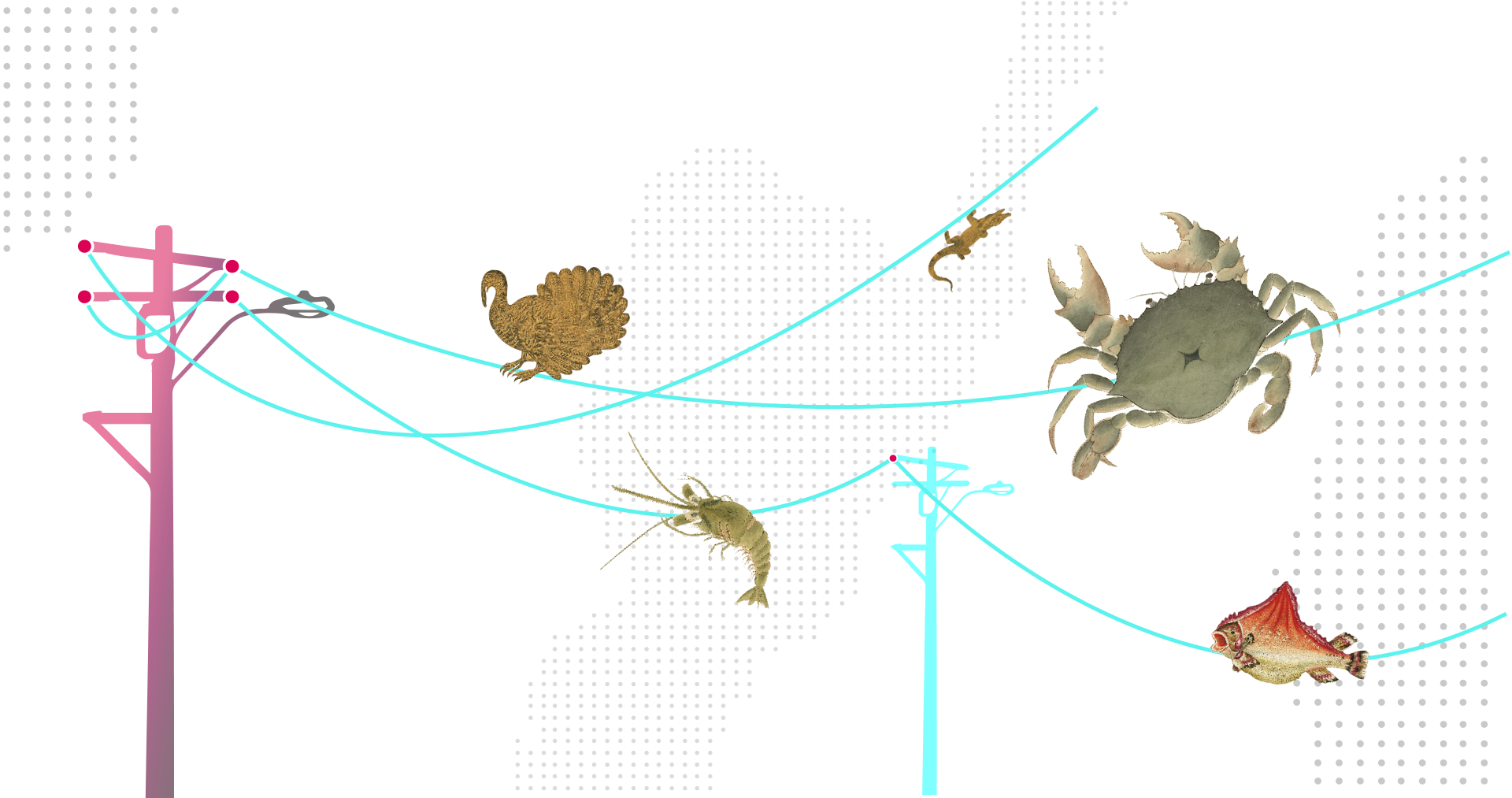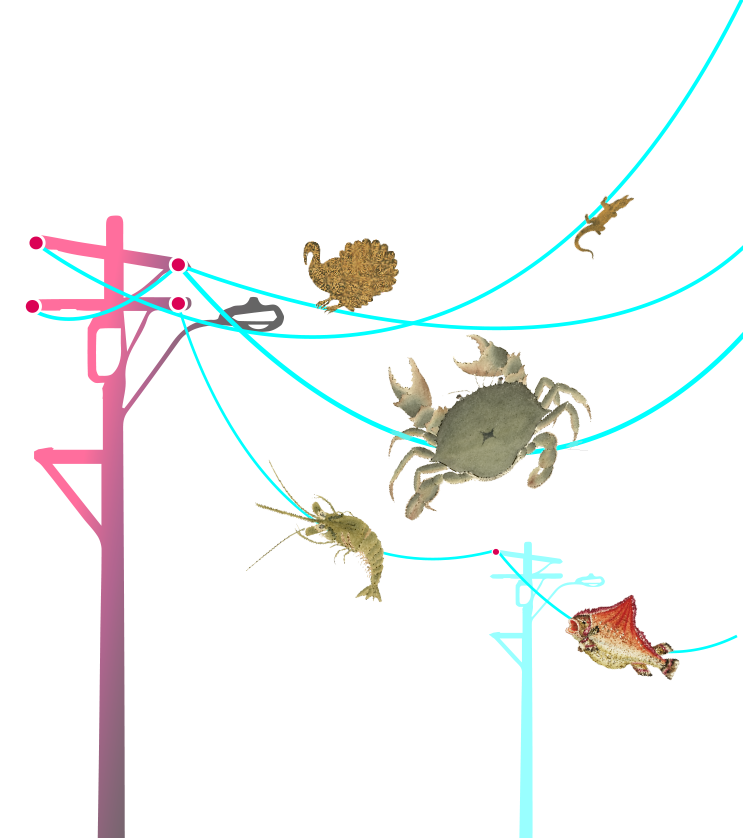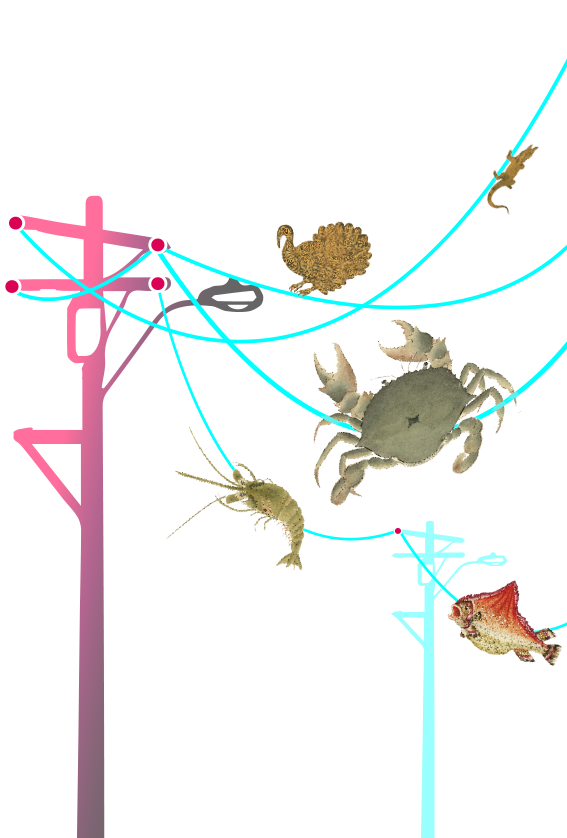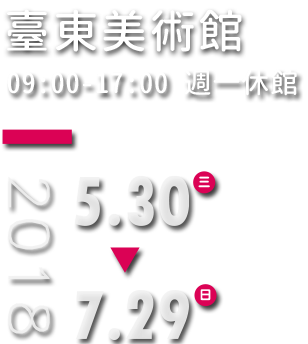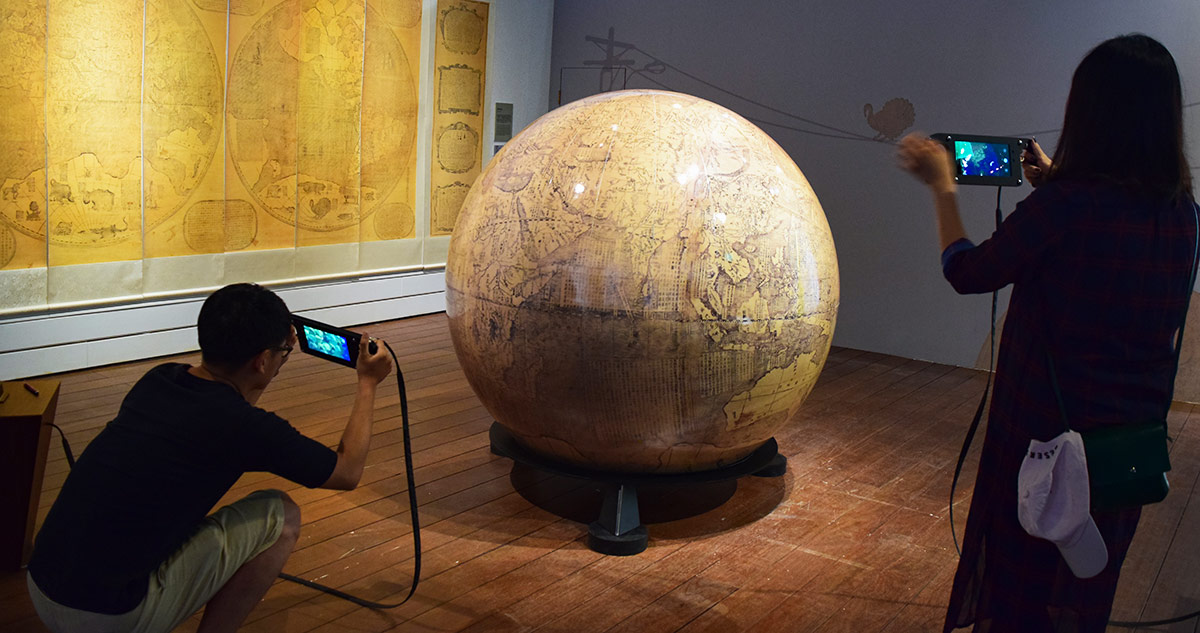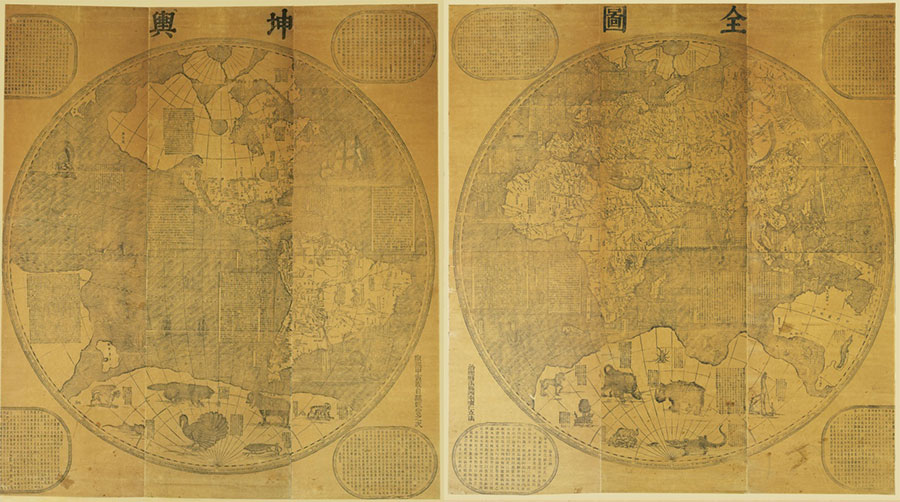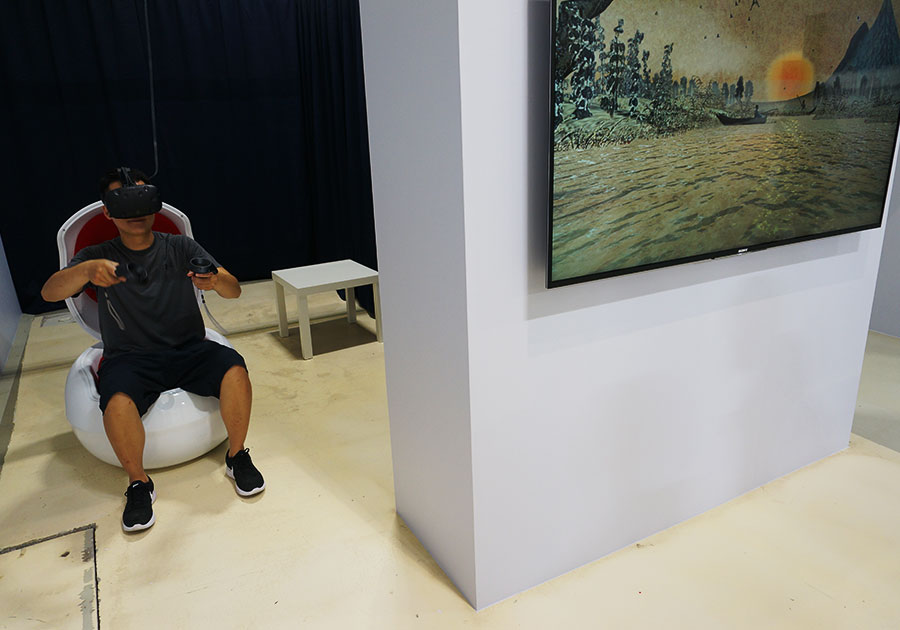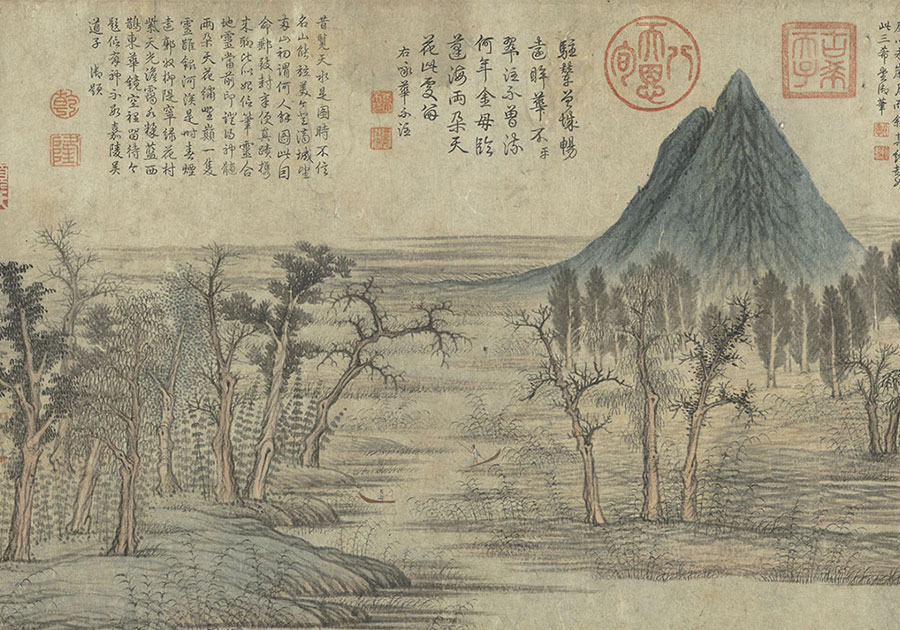After viewing the interactive displays of classic landscape paintings and illustrations of marine biology from the NPM's collection, let us experience the museum artifacts from a brand new perspective. In this section, audiences are able to travel within the virtual reality installation of Yuan Dynasty Zhao Meng-Fu's masterpiece Autumn Colors on the Qiao and Hua Mountains. Grasp the ancient world within your palms with the augmented reality device inspired by the Kunyu Quantu, a world map developed by 17th century Jesuit missionary Ferdinand Verbiest. By using mobile devices to scan the ancient globe, visitors are able to explore the 17th century worldview and depictions of rare beasts directly on their screens!
Ferdinand Verbiest's Kunyu Worldview Augmented Reality Installation
Ferdinand Verbiest's Kunyu Worldview Augmented Reality Installation utilizes modern augmented reality technology to reconstruct the 17th century worldview and enables the habitats of ancient creatures to reappear before us in the form of augmented Reality Installation. Visitors are able to use mobile devices to scan the globe before them and find out which animal will appear on the screen. Observe how these early depictions of familiar species are different from our present understanding. Pick up your mobile device and start globe-trotting in search of rare beasts!
Kunyu Quantu
- Great Universal Map
- Ferdinand Verbiest , 1674 CE
Kunyu Quantu, completed in 1674 by the Jesuit missionary Ferdinand Verbiest, was used as an explanatory apparatus to impart the geophysical worldview of the west to the Emperor Kangxi. Comprised of eight long scrolls and the only existing illustration of the eastern and western hemispheres in the history of Chinese geography, the map introduces western geographical and astronomical theories during the 16th and 17th centuries, such as the spherical earth theory, atmospheric sciences, as well as theories of tides and earthquakes. The map also shows European sailing vessels and several depictions of rare and spectacular terrestrial and marine creatures, for example giraffes, chameleons, beavers, whales, etc., successfully fulfilling the curiosity of contemporaries.
Roaming through Fantasy Land VR Installation
In this section, we invite you to enter the virtual reality adaptation of the late Sung and early Yuan dynasty painter Zhao Mengfu's masterpiece Autumn Colors on the Qiao and Hua Mountains. Roam through the autumn scenery of the Hua (Buzhu) and Qiao Mountains, view the towering pine trees, falling maple leaves and small huts at close range and proceed along the stream in the autumnal valley.
Autumn Colors on the Qiao and Hua Mountains
Zhao Mengfu (style name Zi'ang, sobriquet Songxue daoren), a member of the Song dynasty imperial clan, went north after the Song fall to serve as an official in the Yuan capital of Dadu. This work, done in 1295 after heading back south from serving in the Ji'nan Circuit and for his friend Zhou Mi (1232-1298), depicts the scenery of Zhou's ancestral land. The composition of the scroll is succinct; by the shores of marshy slopes and expanses of water are the pointed Hua(buzhu) Mountain to the right and the rounded Qiao Mountain on the left. Both the sloping banks and trees are very similar to the motifs in Dong Yuan's landscapes. Through Zhao Mengfu's brush and ink as well as coloring, they have become even more animated, forming naturally beautiful scenery pleasing to the eye.
